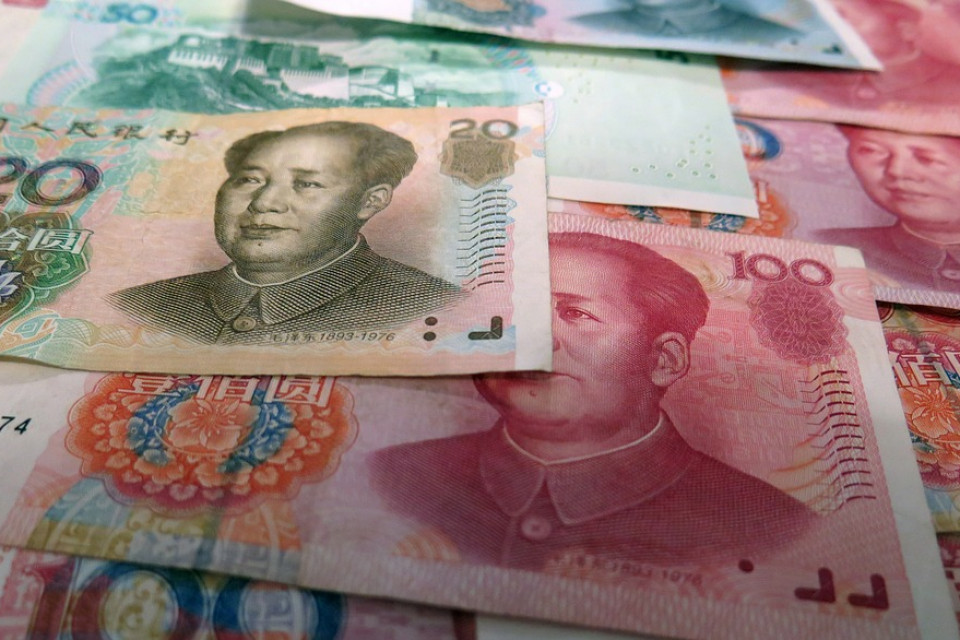President of the United States, Donald Trump, uses a tariffs policy against Chinese imports and is attempting to do it same with those from Mexico, to diminish their imports to reduce the foreign trade deficit that he has with these countries. The trade imbalance between the United States and Mexico was 150 thousand million dollars at the end of 2018, while in that period that with China United States amounted to 450 thousand million.
Likewise, the tariff policy attempts to stimulate the exodus of US companies from China and Mexico (by not being able to continue exporting to the US) and to return to their own country, boosting its economic dynamics by returning to where they were before.
The tariffs established by the US on imports from different countries with which it has a foreign trade deficit calls free trade into question, because, as the loser in this process, they were confronted with many years of reduced growth.
Through tariffs and the reduction corporation tax, the US government is trying to gain an advantageous economic and political position against its trading members, and so far has achieved some results in boosting domestic production.
In the first quarter of 2019, the US growth rate was 3.1%, and the unemployment rate in the month of April was 3.6%.
THE US-CHINA DISPUTE
On May 10th this year, the US government increased the tariff from 10% to 25% on Chinese imports, amounting to 200 thousand million dollars, and threatened to impose tariffs on another 300 thousand million worth of Chinese imports at the end of June.
In addition to the imposition of tariffs on imports from China, the US government has banned the purchase of US technology by Chinese companies, to stop the country's technological progress. It also wants to eliminate the transfer of technology which American companies are forced to do in favour of Chinese companies, as well as the Chinese policy of subsidies and other state policies in favour of their own national companies, which place American companies at a disadvantage.
The US government is pressuring its allies to restrict their trade with China and Chinese companies, to reduce the position of influence that China has attained.
The problem is that Chinese companies already have a substantial presence in value chains, in international trade and in the US economy itself, so the US government will not achieve its purposes. China has positioned itself as the standard bearer of the open economy, which continues to open up markets for them.
In the first quarter of 2019 compared to the same period of 2018, the US trade deficit with China decreased by 12.1%. Meanwhile, in the same period the Mexican trade surplus with the US increased 26.6%.
It is evident that the tariffs established by the US government for imports from China have allowed it to reduce the trade deficit with it, and have benefited Mexico's exports to the US, which have replaced a portion of Chinese exports in this market, which is why the US has increased its trade deficit with Mexico.
The decrease of exports from China to the US is reflected in a slight lower growth of Chinese GDP in Q1 2019 of 6.4%, down from 6.8% in Q1 2018. Conversely, the US GDP growth the same period went from 2.2% to 3.1%, which shows that so far, establishing tariffs has yielded a net gain for the USA.
Although the tariffs established by the US on Chinese imports have reduced the trade deficit with China, the total US trade deficit has nevertheless increased (from 805,200 million dollars in 2017 to 887,338 million dollars in 2018), showing that imports from China have been replaced with imports from other countries. This reveals that there has been no great advance in the import substitution that Donald Trump government intended to boost domestic production, although the economy has indeed shown dynamism.
Although import tariffs tend to affect China more than the USA because China sells to the US more than what it buys from it, China has managed to circumvent this situation by boosting its domestic market.
Faced with the tariffs established by the US on imports from China, it responded by imposing tariffs of 10, 20 and even 25%, on the import of US products from June 1st, for a total of 60 thousand million dollars annually. Its government has also been investing heavily in science and technology, allowing it to counteract the technology transfer bans that the US has imposed.
If the tariffs continue to increase and extend to all Chinese imports, it will have an impact by increasing price if productivity and production in the US are not increased to offset the higher cost of imported products.
The Chinese government can resort to the devaluation of the Yuan, to lower its prices and offset the impact of tariffs on the price of Chinese imports, which would further complicate the trade struggle between these two countries.
For the USA to return to what it was before would requires substantial investments in science and technology to boost productive capability and this is not happening to the desired extent, despite the tax and tariff policy that provide conditions favourable to boosting investment in production.
By not increasing US investment in production and productive capacity, its foreign trade deficit will continue to increase in spite of the tariffs established on products from China and other countries, since such imports will simply be substituted by others from different countries, ones that will see their trade surplus with the US increase, and once again US growth will be slowed down.
USA-MEXICO CONFLICT
Trade in manufactured goods between Mexico and the US is largely intra-firm, where US inputs and components are sent mostly to be assembled in Mexico. This increased in 2018, as imports from China decreased due to tariffs.
Mexico's exports in 2018 were worth 450 thousand million dollars. 81.33 percent of them went to the United States and 83 percent of this was through intra-firm trade, where the automotive industry stands out.
Mexico's manufactured exports to the US contains a high percentage of imported components, particularly inputs and components from China and the rest of the Asian countries, such as the US, so these exports, having a low domestic component, do not significantly impact the manufacturing dynamics and their economy.
Mexico's exports to the US are equivalent to 32% of GDP and intra-firm trade is 17% of GDP, which demonstrates the substantial dependence that the Mexican economy has on trade with the United States, which places it in a high context. vulnerability to the behaviour of the US economy, as well as the decisions that its government takes regarding trade between both countries.
If exports from Mexico to the US are subject to tariffs, their growth would be compromised, since they would lose competitiveness compared to other US imports, which are not subject to tariffs. The foreign trade surplus that Mexico has with the US would be reduced, and the total foreign trade deficit of the country would increase, and this would further reduce economic growth.
In fact, there was a threat to establish tariffs on imports from Mexico (despite the fact that the Free Trade Agreement between the US, Canada and Mexico prohibits them), if the government did not stop the flow of Central Americans to the United States.. The Donald Trump government went on to use tariff policy as a negotiating tool against Mexico. He threatened that as regards the US, he would establish a tariff of 5% on Mexican imports from June 10th and that he would make a monthly increase until reaching 25% in the month of October, if Mexico did not slow down this migration into the US.
The US president even said in the days of the negotiation that the US did not need Mexico, and that the Mexicans did need the US, manifesting its strong negotiating position, which led the Mexican government to yield the US demands so that tariffs were not established. Mexico committed to sending 6,000 members of its National Guard to the southern US border to stop the migration of Central Americans and accepted that the United States instantly return to Mexico those people who cross the US border to request asylum, and that they wait in Mexico for the resolution of their refugee applications and that Mexico bear the respective costs.
The Mexican government, to avoid tariffs and the commercial war that would be unleashed due to the response it would have to establish in the face of US tariffs, accepted the US government impositions of stopping the migration into their country.
Predominantly, the view that resorting to tariffs on imports increases the cost and end price of products, which negatively affects their competitiveness, their growth of production and their economy. Hence the position of many of avoiding tariffs and defending free trade. However, if the current policy continues, it will be at the expense of maintaining the foreign trade deficit and the low levels of internal integration of exports and domestic production, which has slowed down economic growth.
So far, no cooperation position of the US is foreseen, because they want to grow at the expense of the other countries. The Mexican government, instead of accepting US impositions, could perfectly well have assumed the position of facing tariffs, reciprocating with the same policy. The higher cost of tariffs on imported products could be counteracted by industrial, agricultural and credit policy to boost productivity and production, lowering production costs and replacing the imports whose prices had been inflated by tariffs. This would reduce the foreign trade deficit, as well as the economic and financial dependence on the US, and the external vulnerability (economic and political) trap into which it has fallen.











